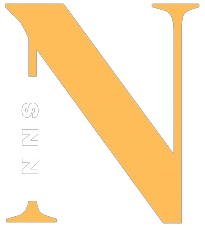Elements of Mechanical Engineering 21EME15/25
| Category | Details | Category | Details |
|---|---|---|---|
| Course Code | 21EME15/25 | CIE Marks | 50 |
| Teaching Hours / Week (L:T:P:S) | 2:0:2:0 | SEE Marks | 50 |
| Total Hours of Teaching-Learning | 40 | Total Marks | 100 |
| Credits | 03 | Exam Hours | 03 |
2021 Scheme Notes – Elements of Mechanical Engineering (Download👇)
21EME15/25 Syllabus
Module 1
Introduction to Mechanical Engineering
Introduction to Mechanical Engineering (Overview only):
Role of Mechanical Engineering in Industries and Society- Emerging Trends and Technologies in different sectors such as Energy, Manufacturing, Automotive, Aerospace, and Marine sectors and contribute to the GDP.
Steam Formation and Application:
Formation of steam and thermodynamic properties of steam (Simple Problems using Steam Tables), Applications of steam in industries namely, Sugar industry, Dairy industry, Paper industry, Food processing industry for Heating/Sterilization, Propulsion/Drive, Motive, Atomization, Cleaning, Moisturization, Humidification
Energy Sources and Power Plants:
Review of energy sources; Construction and working of Hydel power plant, Thermal power plant, Nuclear power plant, Solar power plant, Tidal power plant, Wind power plant.
Introduction to basics of Hydraulic turbines and pumps: Principle and Operation of Hydraulic turbines, namely, Pelton Wheel, Francis Turbine and Kaplan Turbine. Introduction to working of Centrifugal Pump
Module 2
Properties, Composition, and Industrial Application of Engineering Materials
Metals-Ferrous: Tool steels and stainless steels. Non-ferrous /metals: aluminum alloys.
Ceramics- Glass, optical fiber glass, cermets. Composites- Fiber reinforced composites, Metal matrix Composites. Smart materials- Piezoelectric materials, shape memory alloys, semiconductors, and super insulators.
Metal Joining Processes:
Soldering, Brazing and Welding: Definitions. Classification and methods of soldering, brazing, and welding. Brief description of arc welding, Oxy-acetylene welding, Introduction to TIG welding and MIG welding.
Heat Transfer Applications:
Review of modes of Heat Transfer; Automobile Radiators; Condensers and evaporators of refrigeration systems; Cooling of Electrical and Electronic Devices; Active, Passive, and Hybrid Cooling.
Module 3
Fundamentals of IC Engines
Fundamentals of IC Engines:
Review of Internal Combustion Engines, 2-Strokes and 4-Strokes engines, Components and working principles, Application of IC Engines in Power Generation, Agriculture, Marine and Aircraft Propulsion, Automobile.
Insight into future mobility technology: Electric and Hybrid Vehicles, Components of Electric and Hybrid Vehicles, Drives and Transmission. Advantages and disadvantages of EVs and Hybrid vehicles.
Refrigeration and Air-Conditioning:
Principle of refrigeration, Refrigeration effect, Ton of Refrigeration, COP, Refrigerants and their desirable properties. Principles and Operation of Vapor Compression and Vapor absorption refrigeration. Domestic and Industrial Applications of Refrigerator. Working Principles of Air Conditioning, Classification, and Applications of Air Conditioners. Concept and operation of Centralized air conditioning system.
Module 4
Mechanical Power Transmission
Gear Drives: Types – spur, helical, bevel, worm and rack and pinion, velocity ratio, Gear Trains and their application: simple and compound Gear Trains, Simple numerical problems on Gear trains involving velocity ratios.
Belt Drives: Components of belt drive and concept of velocity ratio; Types of belt drives, FlatBelt Drive, V-Belt Drive and Application of Belt Drives. Simple numerical problems on Belt drives involving velocity ratios,
Concept of Chain, Rope drives and their applications.
Fundamentals of Mechanical Linkages: Definitions of Machines and Mechanisms. Applications of linear motion, oscillatory motion, rotary motion, ratchet and latches, clamping, reverse motion, pause and hesitation, loading and unloading Mechanisms.
Introduction to Robotics:
Robot anatomy, Joints & links, common Robot configurations. Applications of Robotics in Material Handling, Processing, Assembly, and Inspection.
Module 5
Fundamentals of Machine Tools and Operations
Fundamentals of Machine Tools and Operations: Fundamentals of Machining and machine tools, Construction and Working Principle of Lathe, Various Lathe Operations: Turning, Facing, Taper Turning and Knurling.
Construction and Working of Milling Machines and applications.
Construction and working of simple Drilling Machines and applications.
(Sketches of layout need not be dealt with for all machine tools)
Introduction to Modern Manufacturing Tools and Techniques:
CNC: Introduction, components of CNC, advantages and applications of CNC, CNC Machining centres and Turning Centers
Concepts of Smart Manufacturing and Industrial IoT.
